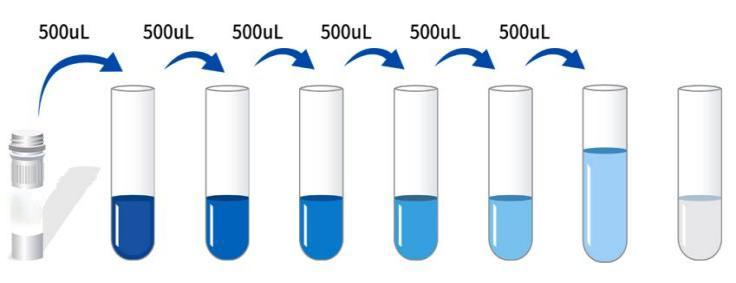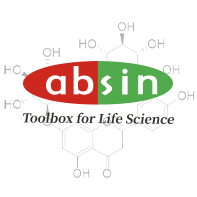Product Details
Product Details
Product Specification
| Usage |
Equipment required for the experiment: 1. Microplate reader (450nm) 2. High-precision pipette and pipette tips: 0.5-10uL, 5-50uL, 20-200uL, 200-1000uL 3. 37℃ constant temperature incubator 4. Distilled water or deionized water Sample processing and requirements: Serum: Place the whole blood sample collected in the serum separation tube at room temperature for 2 hours or at 4℃ overnight, then centrifuge at 1000×g for 20 minutes. Take the supernatant, or store the supernatant at -20℃ or -80℃, but avoid repeated freezing and thawing. Plasma: Collect the specimen using EDTA or heparin as an anticoagulant. Centrifuge the specimen at 1000×g for 15 minutes at 2-8°C within 30 minutes of collection. Remove the supernatant for testing. Alternatively, store the supernatant at -20°C or -80°C, but avoid repeated freeze-thaw cycles. Other biological fluids: Centrifuge at 1000×g for 20 minutes. Remove the supernatant for testing. Pre-Test Preparation: 1. Remove the test kit from the refrigerator 10 minutes in advance and allow it to equilibrate to room temperature. 2. Prepare the gradient working solution of the standard: Add 1 mL of universal diluent to the lyophilized standard. Let stand for 15 minutes to completely dissolve, then gently mix (concentration 500 pg/mL). Then dilute to the following concentrations: 500 pg/mL, 250 pg/mL, 125 pg/mL, 62.5 pg/mL, 31.25 pg/mL, 15.625 pg/mL, 7.8125 pg/mL, and 0 pg/mL. Serial dilution method: Add 500 μL of universal diluent to each of seven EP tubes. Pipette 500 μL of the 500 pg/mL standard working solution into the first EP tube and mix thoroughly to make a 250 pg/mL standard working solution. Repeat this procedure for subsequent tubes. The last tube serves as a blank well; there is no need to pipette liquid from the penultimate tube. See the figure below for details.  3. Preparation of Biotin-Antibody Working Solution: Centrifuge the concentrated Biotin-Antibody at 1000×g for 1 minute 15 minutes before use. Dilute 100×concentrated Biotin-Antibody to a 1×working concentration with universal diluent (e.g., 10uL concentrate + 990uL universal diluent) and use on the same day. 4. Preparation of Enzyme Conjugate Working Solution: 15 minutes before use, centrifuge the 100x concentrated enzyme conjugate at 1000×g for 1 minute. Dilute the 100× concentrated HRP enzyme conjugate with universal diluent to a 1× working concentration (e.g., 10µL concentrate + 990µL universal diluent). Use the same day. 5. Preparation of 1× Wash Solution: Add 10mL of 20× Wash Solution to 190mL of distilled water. (Concentrated wash solution removed from the refrigerator may crystallize; this is normal. Allow to stand at room temperature until the crystals have completely dissolved before preparing.) Procedure: 1. Remove the desired strips from the aluminum foil bag after equilibration at room temperature for 10 minutes. Seal the remaining strips in a ziplock bag and return them to 4°C. 2. Sample Addition: Add 50 μL of sample or standard of varying concentrations to the corresponding wells. Add 50 μL of universal diluent to the blank wells, followed by 50 μL of Biotin-Antibody Working Solution to each well. Cover with a film sealer and incubate at 37°C for 1 hour. (Recommendation: Dilute the sample to be tested at least 1-fold with universal diluent before adding it to the plate to minimize matrix effects. The sample concentration should be multiplied by the dilution factor when calculating the final sample concentration. It is recommended to run replicates for all samples and standards.) 3. Plate Wash: Discard the remaining liquid and add 300 μL of 1x Wash Solution to each well. Let stand for 1 minute, then shake off the solution and pat dry on absorbent paper. Repeat this process three times (a plate washer can also be used). 4. Enzyme Conjugate Working Solution: Add 100 μL of enzyme conjugate working solution to each well. Cover with a film sealer and incubate at 37°C for 30 minutes. 5. Washing: Discard the liquid and wash the plate five times as in step 3. 6. Adding substrate: Add 90 μL of substrate (TMB) to each well, cover with a sealing film, and incubate at 37°C in the dark for 15 minutes. 7. Adding stop solution: Remove the plate and add 50 μL of stop solution directly to each well. Immediately measure the OD value of each well at 450 nm. Calculating experimental results: 1. Calculate the average OD value of the standard and sample replicates and subtract the OD value of the blank well as a correction factor. Plot a four-parameter logistic function standard curve on double-logarithmic graph paper with concentration as the horizontal axis and OD value as the vertical axis. 2. If the sample OD value is higher than the upper limit of the standard curve, dilute the sample and retest it. Multiply the sample concentration by the corresponding dilution factor. Kit Performance: 1. Repeatability: Intra-plate coefficient of variation (CV) less than 10%, and inter-plate coefficient of variation (CV) less than 10%. 2. Recovery: MT was spiked into selected healthy serum and plasma at three different concentrations, and the recovery was calculated.
|
||||||||||||||||||||||||||||||||
| Theory | This kit uses a competitive enzyme-linked immunosorbent assay (ELISA). Sample, standard, biotin-labeled antibody, and HRP conjugate are sequentially added to microwells pre-coated with the universal species melatonin (MT) antigen. After incubation and washing, the sample is developed using the substrate TMB. TMB is converted to blue by HRP peroxidase and then to yellow by acid. The intensity of the color is positively correlated with the universal species melatonin (MT) content in the sample. The absorbance (OD) is measured at 450 nm using a microplate reader to calculate the sample concentration. | ||||||||||||||||||||||||||||||||
| Source | All | ||||||||||||||||||||||||||||||||
| Synonym | Melatonin ELISA Kit | ||||||||||||||||||||||||||||||||
| Detection Type | Competition Law | ||||||||||||||||||||||||||||||||
| Composition |
|
||||||||||||||||||||||||||||||||
| Background | Melatonin, also known as melatonin or melatonin, is chemically called N-acetyl-5-methoxytryptamine. In common species, 5-hydroxytryptamine (also known as serotonin) reacts with acetyl-CoA under the catalysis of N-acetyltransferase to convert it into N-acetyl-5-hydroxytryptamine. N-acetyl-5-hydroxytryptamine is then methylated by S-adenosylmethionine under the catalysis of acetyl-serotonin O-methyltransferase to form melatonin. Side effects of melatonin supplementation are minimal at low doses and for short periods of time. They may include drowsiness (sleepiness), headache, nausea, diarrhea, abnormal dreams, irritability, nervousness, restlessness, insomnia, anxiety, migraine, hypersomnia, psychomotor hyperactivity, dizziness, hypertension, abdominal pain, heartburn, mouth ulcers, dry mouth, and hyperbilirubinemia. Dermatitis, night sweats, itching, rash, dry skin, pain in the limbs, menopausal symptoms, chest pain, glycosuria (sugar in the urine), proteinuria (protein in the urine), abnormal liver function tests, weight gain, fatigue, mood swings, aggression, and hangover. It is not recommended for use during pregnancy or breastfeeding, or for individuals with liver disease. | ||||||||||||||||||||||||||||||||
| General Notes | 1. Strictly adhere to the specified incubation time and temperature to ensure accurate results. All reagents must be at room temperature (20-25°C) before use. Refrigerate reagents immediately after use. 2. Improper plate washing may result in inaccurate results. Ensure that all liquid in the wells is aspirated thoroughly before adding substrate. Do not allow the wells to dry out during incubation. 3. Remove any residual liquid and fingerprints from the bottom of the plate, as this will affect the OD value. 4. The substrate developer solution should be colorless or very light in color. Do not use substrate solution that has turned blue. 5. Avoid cross-contamination of reagents and specimens to prevent erroneous results. 6. Avoid direct exposure to strong light during storage and incubation. 7. Do not expose any reagents to bleaching solvents or the strong fumes emitted by bleaching solvents. Any bleaching agent will destroy the biological activity of the reagents in the kit. 8. Do not use expired products, and do not mix components with different product numbers and batches. 9. Recombinant proteins from sources other than the kit may not be compatible with the antibodies in this kit and will not be recognized. 10. If there is a possibility of disease transmission, all samples should be managed properly and samples and testing devices should be handled according to prescribed procedures. |
||||||||||||||||||||||||||||||||
| Storage Temp. | If the unopened kit is stored at 4°C, the shelf life is 6 months. | ||||||||||||||||||||||||||||||||
| Test Range | 7.8-500 pg/mL | ||||||||||||||||||||||||||||||||
| Applications | Serum, plasma, and other biological fluids |


